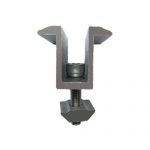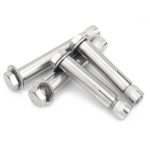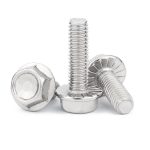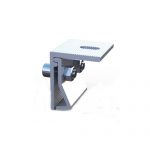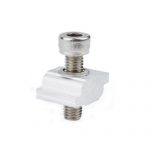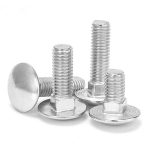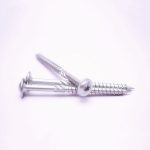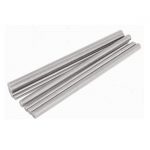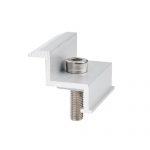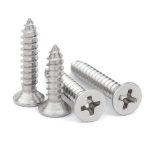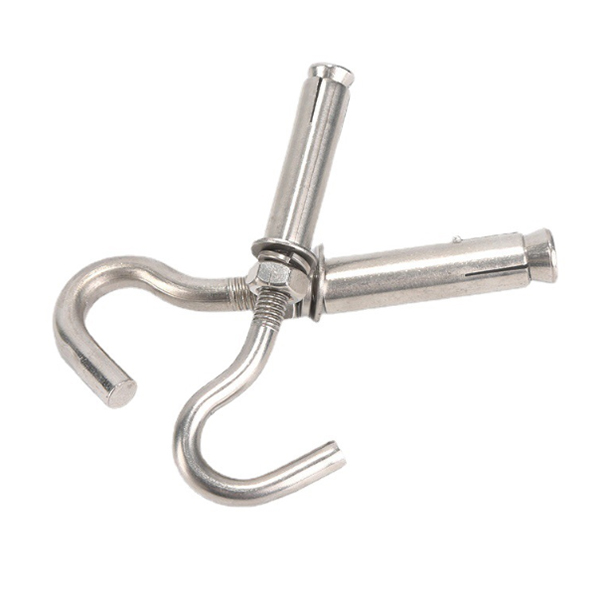
Standard: Hook Anchor
GRADE: A2-70,A4-80
Material: stainless steel A2-304,A4-316,SMO254,201,202,
Surface finish:Plain or Customized
Packing: cartons with furmigated pallets
Supply ability: 50 tons per month
Stainless steel hook anchors are versatile and durable fasteners that are widely used in construction, infrastructure, and marine applications. With their excellent strength, corrosion resistance, and ease of installation, these anchors are a reliable and cost-effective solution for securing heavy loads to various substrates.
In this comprehensive guide, we will explore everything you need to know about SS hook anchors, including their types, features, benefits, installation process, maintenance, and applications. By the end of this article, you will have a solid understanding of how to choose and use SS hook anchors in your projects.
1. Introduction
SS hook anchors are a type of mechanical fastener that uses a hook-shaped end to grip onto a substrate, providing a secure attachment point for various fixtures and fittings. These anchors are made of high-quality stainless steel, which provides superior corrosion resistance, strength, and durability, making them ideal for use in harsh environments.
Whether you are building a bridge, installing a sign, or securing a boat, SS hook anchors can provide a reliable and long-lasting solution. In the following sections, we will take a closer look at the types, features, benefits, installation process, maintenance, and applications of SS hook anchors.
2. What is an SS Hook Anchor?
An SS hook anchor is a type of fastener that is designed to attach to a substrate by means of a hook-shaped end. The hook can be bent, straight, or welded, depending on the application and substrate. The other end of the anchor is threaded, allowing for the attachment of various fixtures and fittings.
SS hook anchors are commonly made of stainless steel, which provides excellent corrosion resistance and durability, making them suitable for use in outdoor and marine environments. They are available in various sizes and load capacities, allowing them to be used in a wide range of applications.
3. Types of SS Hook Anchors
There are three main types of SS hook anchors, each with its own unique features and applications.
3.1 Welded Hook Anchor
A welded hook anchor is made by welding a hook-shaped piece of metal to a threaded rod. This type of anchor is ideal for use in concrete or masonry, where a strong and reliable attachment point is required. Welded hook anchors are available in various sizes and load capacities, making them suitable for both light and heavy-duty applications.
3.2 Bent Hook Anchor
A bent hook anchor features a hook that is bent at a 90-degree angle to the threaded rod. This type of anchor is ideal for use in wood, where a strong and secure attachment point is needed. Bent hook anchors are easy to install and can be used with a variety of fixtures and fittings.
3.3 Straight Hook Anchor
A straight hook anchor is similar to a bent hook anchor, but with a hook that is straight instead of bent. This type of anchor is ideal for use in thin materials or where a low profile is required. Straight hook anchors are easy to install and can be used with a variety of fixtures and fittings.
4. Features of SS Hook Anchors
SS hook anchors have several features that make them an attractive choice for various applications. Here are some of the key features of SS hook anchors:
4.1 Material
SS hook anchors are made of high-quality stainless steel, which provides superior corrosion resistance, strength, and durability. Stainless steel is also resistant to extreme temperatures, making it suitable for use in both hot and cold environments.
4.2 Corrosion Resistance
Stainless steel is known for its excellent corrosion resistance, which makes it an ideal material for use in harsh environments. SS hook anchors are resistant to rust, corrosion, and other forms of degradation, making them suitable for outdoor and marine applications.
4.3 Strength
SS hook anchors are designed to provide a strong and reliable attachment point for various fixtures and fittings. They are available in various sizes and load capacities, allowing them to be used in a wide range of applications.
4.4 Versatility
SS hook anchors are versatile and can be used in a variety of applications, including construction, infrastructure, and marine. They can be used with various substrates, including concrete, masonry, wood, and metal.
5. Benefits of SS Hook Anchors
SS hook anchors offer several benefits over other types of fasteners. Here are some of the key benefits of SS hook anchors:
5.1 Durability
SS hook anchors are made of high-quality stainless steel, which provides superior durability and longevity. They are resistant to rust, corrosion, and other forms of degradation, making them a reliable choice for long-term use.
5.2 Easy Installation
SS hook anchors are easy to install and require only basic tools and equipment. They can be installed quickly and easily, reducing installation time and costs.
5.3 Cost-Effectiveness
SS hook anchors are a cost-effective solution for securing heavy loads to various substrates. They are available in various sizes and load capacities, allowing them to be used in a wide range of applications.
5.4 Reliability
SS hook anchors provide a reliable and long-lasting attachment point for various fixtures and fittings. They are designed to withstand extreme forces and conditions, making them a dependable choice for critical applications.
6. How to Install SS Hook Anchors
Installing SS hook anchors is a simple and straightforward process. Here are the steps involved in installing SS hook anchors:
6.1 Pre-Installation Preparation
Before installing an SS hook anchor, it is essential to prepare the substrate by cleaning and drilling a hole of the appropriate size and depth. The hole should be slightly larger than the anchor diameter to allow for easy insertion.
6.2 Drilling
Using a drill bit of the appropriate size, drill a hole into the substrate at the desired location. The depth of the hole should be slightly deeper than the length of the anchor.
6.3 Anchor Placement
Insert the SS hook anchor into the hole, ensuring that the threaded end is facing up. Push the anchor into the hole until the hook end is flush with the substrate.
6.4 Tightening the Anchor
Using a wrench or pliers, tighten the nut on the threaded end of the anchor until it is snug against the fixture or substrate being attached. Be careful not to overtighten, as this can damage the anchor or the substrate.
6.5 Finishing
Once the anchor is tightened, the fixture or fitting can be attached to the hook end of the anchor. For maximum security, it is recommended to use a washer between the nut and the fixture or fitting.
7. Conclusion
SS hook anchors are an excellent choice for anyone who needs a reliable, durable, and versatile attachment point for various fixtures and fittings. They are easy to install, cost-effective, and offer superior corrosion resistance and strength. Whether you are working on a construction project, infrastructure, or marine application, SS hook anchors are an ideal choice that can provide a strong and secure attachment point for your needs.
FAQs
What is an SS hook anchor?
An SS hook anchor is a type of fastener that provides a strong and secure attachment point for various fixtures and fittings. It is made of high-quality stainless steel and is available in various sizes and load capacities.
What are the benefits of using SS hook anchors?
SS hook anchors offer several benefits, including durability, easy installation, cost-effectiveness, and reliability. They are resistant to rust and corrosion, making them suitable for use in harsh environments.
What are the key features of SS hook anchors?
SS hook anchors are made of high-quality stainless steel and offer superior corrosion resistance, strength, and versatility. They can be used with various substrates and are available in various sizes and load capacities.
How do you install SS hook anchors?
To install an SS hook anchor, you need to prepare the substrate by cleaning and drilling a hole of the appropriate size and depth. Once the hole is drilled, insert the anchor and tighten it using a wrench or pliers.
Where can I use SS hook anchors?
SS hook anchors are versatile and can be used in various applications, including construction, infrastructure, and marine. They can be used with various substrates, including concrete, masonry, wood, and metal.

